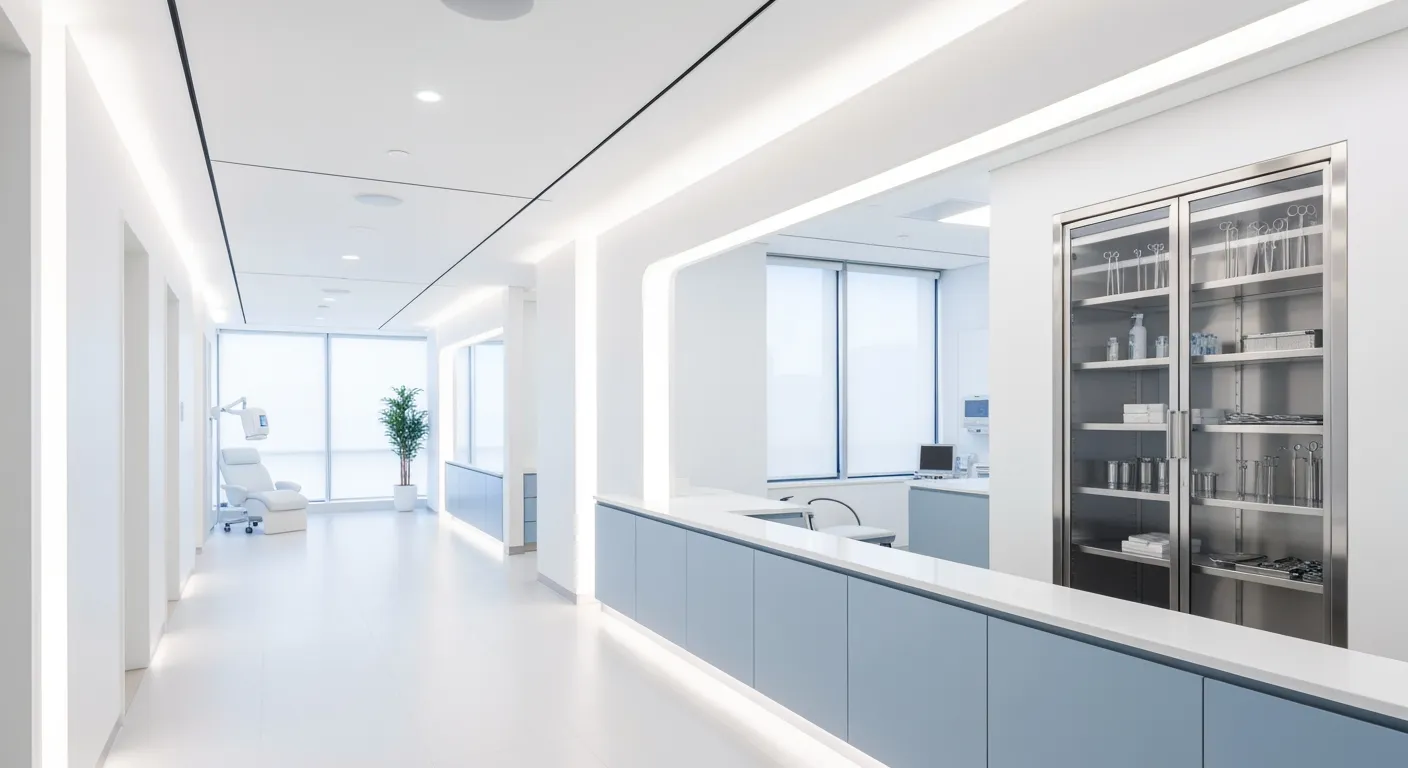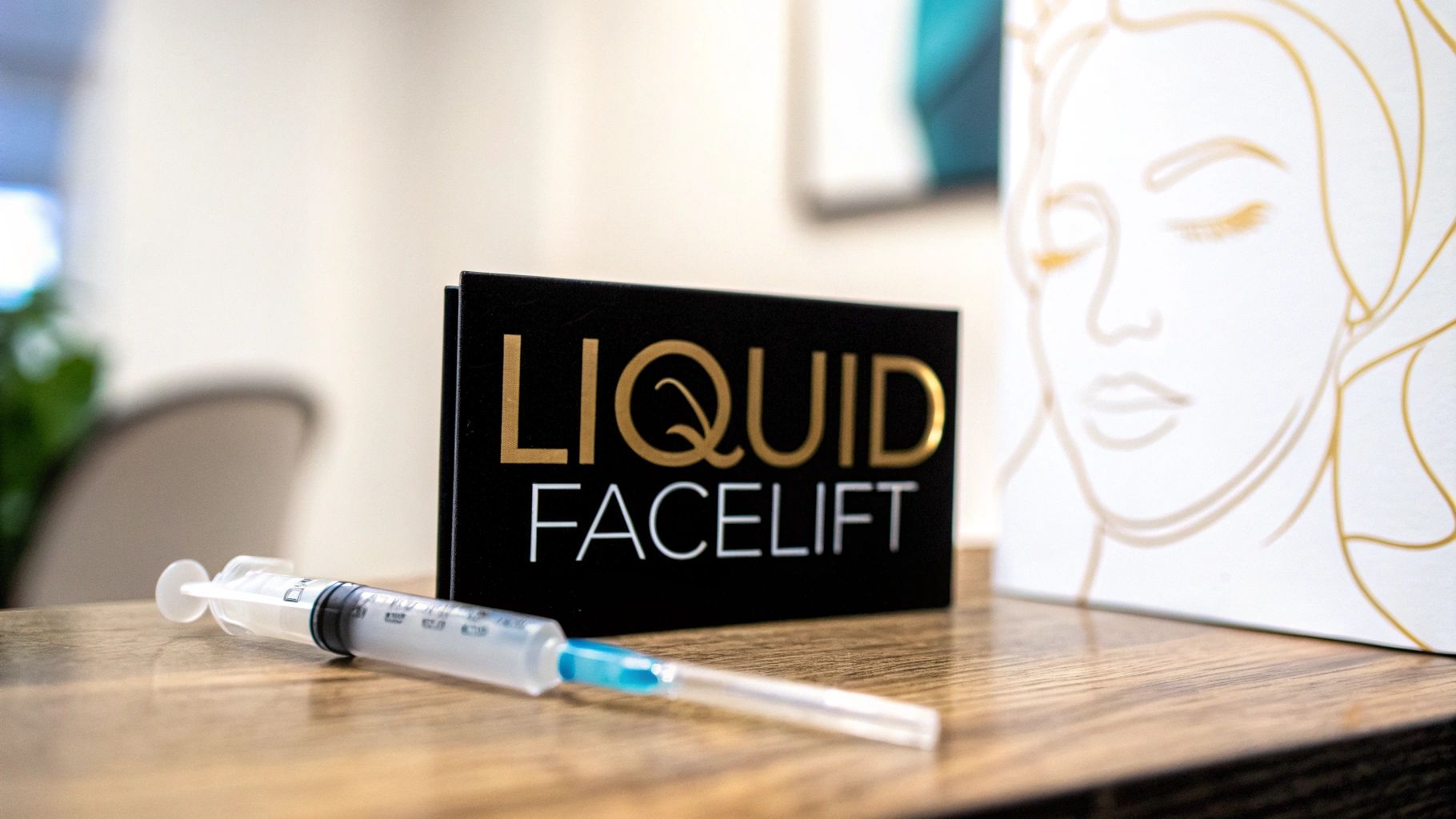
December 21, 2025
Discover best procedures for aging skin today
Explore best procedures for aging skin - from non-invasive treatments to surgical options - and see downtime, costs, and results.
Nov 6, 2025

Plastic surgery is broadly classified into two categories: cosmetic and reconstructive surgery. Cosmetic surgery involves reshaping normal body structures to enhance appearance and boost self-esteem. It is elective and typically not covered by insurance. In contrast, reconstructive surgery aims to repair abnormal structures caused by congenital defects, trauma, infections, tumors, or disease. These procedures usually restore function and approximate normal appearance and are often covered by insurance.
While cosmetic surgery focuses mainly on aesthetic improvement, reconstructive surgery addresses medical needs by repairing defects or injuries. Cosmetic procedures include interventions like facelifts, rhinoplasty, and breast augmentation, whereas reconstructive efforts include breast reconstruction after cancer, correction of cleft lip and palate, and scar revision. The decision to pursue either depends on individual goals, health status, and specific medical indications.
The overarching goal of plastic surgery is to improve quality of life by enhancing physical appearance and restoring function where needed. Cosmetic surgery aims for lasting improvements in physical features, promoting confidence and patient satisfaction. Reconstructive surgery primarily seeks to restore normal function and appearance, improving patients' daily lives and well-being.
Successful plastic surgery relies on a thorough consultation that emphasizes patient education and personalized care. Surgeons assess medical history, discuss achievable outcomes, and set realistic expectations. Patient safety and satisfaction are maximized when procedures are tailored to individual needs, and patients understand the potential risks and recovery processes involved.

Cosmetic surgery is performed to reshape normal body structures with the goal of improving appearance and boosting self-esteem. It is elective and typically not covered by health insurance. Procedures target aesthetic enhancement and include facial surgeries like facelifts, eyelid surgery, and rhinoplasty, as well as body contouring techniques such as breast augmentation, breast lift, liposuction, and abdominoplasty. These surgeries aim to bring lasting changes to physical features while maintaining natural appearance. For more details, see Cosmetic Surgery FAQ and Cosmetic surgery overview.
Reconstructive surgery focuses on repairing abnormal structures caused by congenital defects, trauma, infection, tumors, or disease. It often restores function and approximates a normal appearance. Common reconstructive procedures include breast reconstruction after cancer, correction of cleft lip and palate, scar revision, burn treatment, and complex repairs for traumatic injuries. Unlike cosmetic surgery, reconstructive operations are usually covered by insurance because of their medical necessity. For further information, refer to Plastic surgery overview and reconstructive plastic surgery services.
Elective cosmetic surgeries are performed primarily for aesthetic reasons and are generally not covered by insurance. Medically necessary reconstructive surgeries aim to fix functional impairments or significant deformities and usually receive insurance coverage. Patients should discuss with their surgeon the appropriateness and necessity of their planned procedures. Further resources include Differences between cosmetic surgery and reconstructive surgery and Insurance and Cosmetic Surgery.
Patient choices depend on personal goals, medical history, body characteristics, and health status. Surgeons provide guidance to select suitable procedures and implant sizes. It is essential to have realistic expectations, understand risks, and plan for recovery. Board-certified plastic surgeons ensure safe, personalized care tailored to each patient’s needs. See Surgeon Certification Requirements, Board-certified plastic surgeon importance, and Preparing for cosmetic surgery consultation.

Board certification by the American Board of Plastic Surgery (ABPS) or the American Board of Cosmetic Surgery (ABCS) is a critical marker of a surgeon's qualifications. These certifications confirm that the surgeon has completed rigorous education, training, and examinations specifically tailored to plastic and cosmetic surgery. Choosing a board-certified surgeon increases patient safety by ensuring expertise in both reconstructive and aesthetic procedures (Board certification importance).
Experience matters greatly. Patients should seek surgeons who frequently perform the procedure they are interested in, as higher volume often correlates with better outcomes. Specialized training and continuous education are also essential for staying current with advanced surgical techniques (Evaluating surgeon experience).
Hospital privileges indicate that a surgeon is approved to perform procedures at accredited hospitals. This status reflects the surgeon’s competence and reputation, ensuring they meet institutional standards and can manage emergencies if they arise during surgery (Hospital privileges and accredited facilities).
Surgical facility accreditation by organizations like JCAHO, AAAASF, or AAAHC guarantees adherence to strict safety and quality standards. Accredited facilities maintain rigorous protocols for patient care, equipment sterility, and emergency preparedness, significantly lowering surgical risks (Facility accreditation benefits).
Membership in professional societies, such as the American Society of Plastic Surgeons, reflects a surgeon’s commitment to ethical practice and ongoing professional development. Many organizations offer patient education resources, including before-and-after photos, videos, and safety information, empowering patients to make informed decisions (Patient education resources.
During consultations, patients should inquire about:
An effective consultation fosters clear communication, realistic expectations, and personalized care plans, helping patients feel confident in their surgical choices (Preparing for your cosmetic surgery consultation.
Before plastic surgery, patients undergo a comprehensive Preoperative Evaluation Process that includes a full series of medical tests to ensure fitness for surgery. This assessment helps the surgeon identify any potential risks and tailor the procedure for the patient's safety and optimal results. The evaluation also considers the patient's medical history, current medications, and overall health status.
Smoking should be stopped at least four to six weeks before and after surgery. Nicotine impairs blood flow, delays healing, increases the risk of infection, and can cause complications such as skin necrosis. Similarly, limiting or avoiding alcohol before surgery is recommended as alcohol thins the blood and negatively affects the immune system, reducing the body's ability to heal effectively. See more on Impact of Smoking on Surgery Risks and Pre-surgery lifestyle preparations.
Good hydration supports immune function and enhances the body's healing potential. Patients are encouraged to drink plenty of water and herbal teas in the weeks leading up to surgery. Additionally, maintaining proper nutrition with a balanced diet rich in vitamins and minerals aids tissue repair and reduces the risk of complications. Helpful details are available under Tips for Staying Healthy in Preparation for Cosmetic Surgery.
Some medications and supplements can interfere with surgery or increase bleeding risk. It is important to coordinate with the surgeon about discontinuing blood thinners, anti-inflammatory drugs, and certain herbal supplements prior to surgery. Patients should provide a complete list of all medications and supplements during the consultation. More information on Medication and supplement management before surgery is available.
Education about the procedure, relaxation techniques, and support from family or friends help reduce anxiety before surgery. Planning for adequate rest and recovery, arranging household support, and ensuring a comfortable environment at home facilitate smoother healing and reduce stress during the postoperative period. See recommendations on Planning rest and recovery.
Patients should bring valid photo identification, insurance cards if applicable, and a complete list of medications. Completing a new patient packet with demographic information and health history prior to the appointment is advisable. Clear communication of medical history and expectations with the surgeon enhances personalized care and treatment planning. Reference details about Patient Appointment Documents and Preparing for Cosmetic Surgery Consultation.
Plastic surgery procedures may involve various anesthesia types based on the complexity and patient needs. These include local anesthesia with sedation, intravenous sedation, or general anesthesia, all administered by qualified anesthesiologists or certified nurse anesthetists to ensure patient safety and comfort.
Most cosmetic surgeries are performed on an outpatient basis in accredited facilities certified by organizations such as JCAHO, AAAASF, or AAAHC. Safety is enhanced when the surgeon is board-certified, holds hospital privileges, and operates in accredited centers with skilled personnel.
Tumescent liposuction employs diluted epinephrine to constrict blood vessels, effectively reducing bleeding, bruising, and swelling. This technique facilitates quicker recovery and less postoperative discomfort compared to traditional liposuction methods.
Recovery varies by procedure: facial surgeries like mini facelifts often require about two weeks; breast augmentations and abdominoplasties may involve more significant discomfort and a longer recovery period similar to a C-section. Liposuction recovery is typically quicker and associated with mild discomfort.
Patients are advised to sleep in a reclined position to minimize swelling and use alternating cold and warm compresses to aid healing. Following the surgeon's personalized postoperative instructions promotes optimal recovery and scar management.
All surgical procedures carry risks including infection, bleeding, blood clots, sensory changes, and anesthesia-related complications. Transparent discussions between patient and surgeon regarding potential risks and complications are critical for informed consent and patient safety.
Botox® is a neurotoxin that temporarily relaxes muscle and nerve endings to reduce dynamic wrinkles, such as crow's feet and frown lines. Its effects typically last about three to four months, and repeated treatments can sometimes extend the duration of results.
Restylane® is a dermal filler used primarily to smooth facial wrinkles and restore volume, especially in the lower face. It is absorbed safely by the body over six to twelve months and can be repeated as needed to maintain effects.
Non-surgical treatments like Botox wrinkle treatment, and Restylane dermal filler provide temporary aesthetic improvements with minimal downtime and lower risk compared to surgery. While surgery offers longer-lasting and more dramatic changes, injectables are suitable for patients seeking subtle enhancement or those not ready for surgery.
Injectables are ideal for patients looking to soften wrinkles, enhance volume, or delay surgical interventions. Realistic expectations are important, as results are temporary and require ongoing maintenance treatments.
Both Botox® and dermal fillers have strong safety profiles when administered by qualified professionals. Common side effects are mild and transient, including swelling or bruising. Post-treatment care typically involves avoiding strenuous activity and direct sun exposure for a short period to minimize swelling and bruising.
These non-surgical options offer personalized, less invasive alternatives for facial rejuvenation, aligning with patients' desires for improved appearance with less recovery time and lower risk.
Cosmetic surgery is primarily elective and focused on improving appearance and self-esteem. As such, it is typically not covered by health insurance plans. Procedures done for aesthetic reasons usually require patients to bear the full cost themselves unless a surgery addresses a medical necessity, such as breast reduction for physical discomfort or reconstructive surgeries after trauma.
Given the out-of-pocket nature of most cosmetic surgeries, many clinics offer financing alternatives to make procedures more accessible. CareCredit financing for plastic surgery is a popular option that allows patients to spread payment over time. Additionally, some providers accept credit cards, offer installment payment plans, or collaborate with lenders to provide flexible financing solutions tailored to patient needs, as found in Cosmetic Surgery Financing Options.
The overall cost of plastic surgery includes several components: surgeon’s fees, anesthesia charges, operating room expenses, materials such as implants or fillers, and post-surgical medications. Surgeon fees can vary based on certification, experience, and procedure complexity. Accredited surgical facilities which maintain strict safety standards, may also influence expenses due to their comprehensive resources and skilled personnel.
Plastic surgery results are designed to be long-lasting but are subject to natural aging, lifestyle changes, and body weight fluctuations. While surgeons employ techniques to minimize scar formation and management, patients should understand that scars may persist though typically fade over time with proper care. Maintenance may include non-surgical treatments such as Botox wrinkle treatment or Restylane dermal filler benefits to prolong aesthetic improvements.
Successful surgical outcomes depend not only on technical skill but also on patient mindset. Candidates should have realistic expectations for cosmetic surgery regarding results and be in good mental health, free from conditions such as body dysmorphic disorder. Surgeons emphasize thorough consultations to ensure patients understand surgical risks and complications, benefits, recovery timelines, and potential need for future procedures, fostering safe and satisfying experiences.
Embarking on plastic surgery requires thorough preparation and an informed mindset to ensure safety and satisfaction. Prioritizing your general health—such as quitting smoking, maintaining hydration, and managing medications—enhances healing prospects.
Opt for board-certified plastic surgeons who possess rigorous training, certification, and hospital privileges. Confirm that procedures take place in accredited surgical centers (e.g., JCAHO, AAAASF, AAAHC) to maintain the highest safety standards.
Engage in open dialogue with your surgeon, discussing procedure risks, benefits, and recovery timelines. Realistic goals and a clear understanding of possible outcomes improve personal confidence and decision-making.
Prepare thoroughly for consultations with medical history and questions, and plan for post-operative care and adequate rest. This comprehensive approach facilitates smoother recovery and enhances long-term satisfaction with results.
Focusing on these key areas helps create a safe and successful plastic surgery experience tailored to your individual needs and wellbeing.

December 21, 2025
Explore best procedures for aging skin - from non-invasive treatments to surgical options - and see downtime, costs, and results.

December 20, 2025
What is a liquid facelift? Learn how dermal fillers and neuromodulators restore youthful contours without surgery, with benefits, costs, and expected results.

December 19, 2025
Wondering how long before botox kicks in? Discover a day-by-day timeline, key factors, and when you will see the full effect.